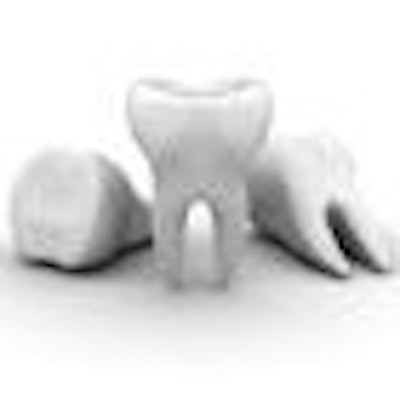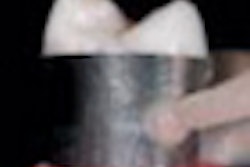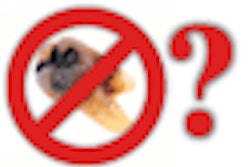
A minimally invasive approach to restoring interproximal root caries using a glass ionomer yielded positive results in a longitudinal study, regardless of the patients' age, gender, or periodontal status -- if the restoration placed was of high quality (General Dentistry, July/August 2012, e224-e230).
The study was conducted by a team of Israeli prosthodontists led by Ilan Gilboa, DMD, an instructor at the Tel Aviv University School of Dental Medicine who created the method. Sorin Teich, DMD, MBA, an associate professor and director of clinical operations in the department of comprehensive care at Case Western Reserve University School of Dental Medicine, also contributed to the effort.
"We feel that the data is really significant -- the results show that the method is viable," Dr. Teich said in an interview with DrBicuspid.com.
Their four-step approach uses glass ionomer for an inexpensive, predictable restoration that preserves more of the natural tooth than traditional methods:
- Remove all caries using a slot preparation with access from the buccal or lingual surface.
- Prepare a matrix band by cutting a 3-mm diameter opening into it with a carbide bur; the prepared band is then tightly fit onto the tooth.
- Inject the glass ionomer through the opening in the matrix (the authors used Fuji IX GP from GC America).
- Remove the matrix and excess material, then finish and evaluate with radiographic imaging.
In the U.S., the percentage of adults older than age 65 is estimated to rise from 13% in 2000 to 20% in 2030, according to the study authors.
"We have to pay attention to the fact that the literature shows that around 24% of the people over the age of 65 have root caries," Dr. Teich said.
Success technique-sensitive
In the General Dentistry study, which ran from May 2002 through November 2008, the researchers examined the clinical outcomes of their restorative treatment using a glass ionomer material with up to an 80-month follow-up. The study included 69 patients with the average age of 57 who received a total of 83 restorations. Immediately after the restorations were placed, the researchers took bitewing radiographs and evaluated them. Periodontal status also was noted.
— Sorin Teich, DMD, MBA, Case
Western Reserve University
Of the 83 restorations, 17 patients did not return and were cut from the analysis, while 58 patients accounting for 66 restorations made it to at least one recall for a median follow-up of 39 months. Seven of these restorations failed and five detached; secondary caries was not present in these cases (attributed to the anticariogenic properties of glass ionomer), and new restorations were not included in the analysis.
While there was an association between age and periodontal status, none was observed between age and the quality of the procedure.
The survival rates were 98% at 26 months, 93% at 47 months, 85% at 59 months, and 77% from 60 months through the end of the observation period, the researchers reported. Their survival rates were significantly better than all other quality scores (p = 0.002). The latter's rates were 71% at 9 months and 54% at 36 months.
"Overall, restorations with a score of 1 survived for an average of 74 months, while the mean survival time for all other restorations was 43 months," the researchers wrote.
Radiographs critical
Long-term success is technique-sensitive and, as a result, radiographs are particularly important in the process, they noted.
"If the radiographic examination of the restoration shows that the restoration is high-quality, then the expectation is that these restorations can last many, many years," Dr. Teich said. "The success rate for the good quality restorations was over 77% at 80 months."
The researchers also warn that restoration longevity can be considered clinically acceptable only if the initial radiographic quality score is 1 or of high quality. Proper cavity preparation, matrix adaptation, and handling of materials are key.
Because the radiographic quality score is such a strong predictor of the restoration's survival, the researchers noted, a radiographic follow-up should be the standard for patients with such restorations.
"We felt that this was a significant addition to the knowledge because it allows practitioners to do something that is very straightforward, simple," Dr. Teich said. "With this, you can do something that is much cheaper than an implant or a bridge. I feel personally that to do conservative dentistry, implants are a second or third line of response if everything else fails."



















